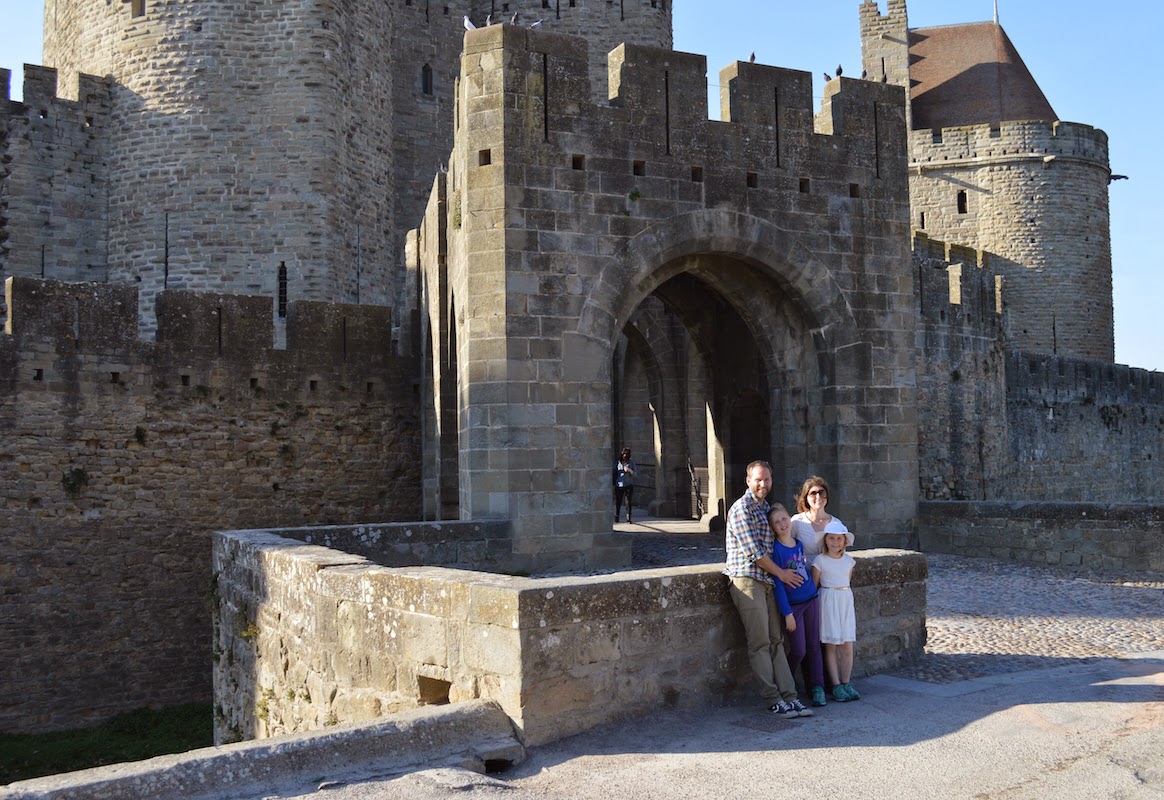For the long time followers of this blog, you may remember we took a trip to Germany back in December. At the time, I commented about Bamberg and Neuschwanstein being fairytale-like, and they were. If visiting those places was like stepping into Cinderella, visiting Avignon and Carcassonne, two medieval French villages, was going to Camelot…except in France.
Avignon, like Lucca, has decided to keep its historic wall. However, while Lucca’s is from the Renaissance (you tell because it’s thick enough to repel canon fire, a new invention at the time), Avignon’s is Medieval (only needed to withstand arrows and worst a catapult or two). The town within the walls is a typical French town with winding streets and older style buildings. Definitely charming to see, but far from the main feature of this particular hamlet.
The star of the show is the Palais de Papes, or Papal Palace. For most of the 1200’s and into the 1300’s, this was the home of nine pontiffs. At the time, there was quite a bit of political unrest in Europe and it was decided that the holy residence would be built in Avignon. And let me tell you, this is most certainly a castle fit for a pope.
Standing in the plaza in front of the palace (sidebar: I will use palace and castle synonymously here though they are slightly different. A palace is a grand residence for royalty. A castle is a fortified structure meant for protection. Palais de Papes is definitely both.) one feels small. Imagine standing in front of the gates of Hogwarts. It was kind of like that, but real. In the picture, if you look very carefully, you can see Stacey and the girls standing at the entrance to give you a bit of a perspective of scale.
Touring the building, as you’d expect, you learn about its history and see the spaces inside, most of which are now home to exhibits of information and don’t much resemble their original look. It’s always a crap-shoot if the girls will find a place we visit interesting or not. I was amazed that their initial reaction to the palace was seemingly blasé. Perhaps they’ve just seen too much cool stuff this year that it was “just another castle”. As we walked through it though, they seemed to get a bit more interested and Arya even took the audioguide from Stacey and wanted to hear everything there was to say about the place. By the time we reached the chapel at the end of the tour, they were excited to be there and *gasp*, enjoying themselves!
Not far from the castle is the Pont Saint-Bénézet, or as you may recognize it (especially if you teach beginning band) the bridge at Avignon of the song “On the Bridge at Avignon” fame. Sadly it was a bit of a let down. Only half the bridge remains and part of it is undergoing restoration right now so it wasn’t much more than a walk out part of an old bridge and back. But at least we can say we were there!
Our last stop in France (for this trip anyway) was a bit of an unknown to me. Stacey did most of the research for this outing and I intentionally didn’t look too much into what to expect at the destinations she’d chosen so I could be surprised. About the only thing I knew about Carcassonne was that there is a geeky tabletop game of the same name that was Medieval in theme.
Upon arrival, I discovered why that name was chosen.
When I was a boy (not just at heart), Carcassonne is what a castle was supposed to look like. In fact, there is a room on the tour of the fortress that has many different toy lines from Lego, Disney, Playmobile, and the like that were clearly designed with the Carcassonne look to them. All the cool castle things you learn about as a kid, murder holes, merlins, crinolines, portcullises, arrow slits, it’s all there. And it wasn’t built for you to come and see and think “Wow, cool,” or to kind of look like it’s supposed to be real like Medieval Times. It was put there for real, as a real castle.
I hope I’m conveying my sense of childlike excitement here. That’s really how I felt. The streets of the town are old stone streets and many of the shops have traditional picture only signs hanging by their doors. Our hotel was literally built into the wall between the fortress and the grand cathedral (pictured above) also contained within the old city. I stayed over night in a castle…now you know why my inner 9 year-old can’t calm down!
Needless to say, if you ever find yourself traveling the south of France, perhaps on your way to Spain (as we were…stay tuned for Barcelona and Madrid!), do yourself, and the you-of-the-past who still remembers Robin Hood: Prince of Thieves and wished you could see what those places were really like, a favor and spend some time in these amazing portals into history.




















No comments:
Post a Comment